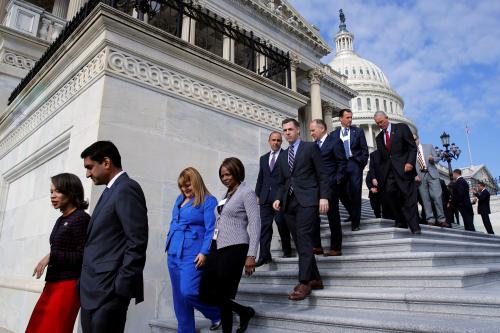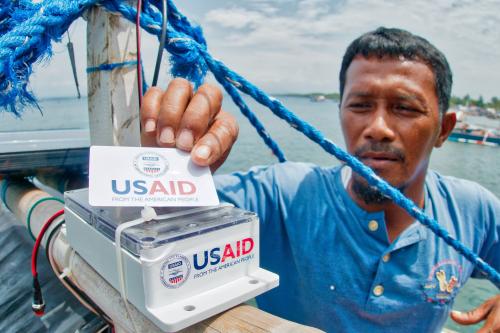As President-elect Trump has neither signaled a specific approach to development, nor issued more than a few random comments about foreign assistance, there is an opportunity to propose an ideal but also realistic picture of how the U.S. should structure its development policies and programs.
To start, we need to outline the current global scene.
The 21st century world is proving to be dramatically different than the post-World War II period, when what we think of as modern development institutions were created. Some people view the world as vastly improved, others as more threatening. What we do know is that development has worked, shown by the 50 percent reduction in extreme poverty over the last 15 years. But much remains to be done, and important changes in our aid systems need to continue to be advanced.
We also know that the 21st century is one of constant change and connectivity—instant communication, rapid transportation, digital rather than print, greater reliance on renewable energies, 3-D printing, revolutions in data, among many more innovations.
In this dramatically changed and changing world, U.S. policymakers and the American public should recognize that American smart power—development and diplomacy—is as important to the U.S. position and influence in the world as is our hard power, and that the way to avoid having to use the hard power is to deploy development and diplomacy robustly and in a forward position.
As recognized in both the Bush and Obama national security strategies, defense and diplomacy policymakers should view development as an essential partner in advancing U.S. national interests, value the development voice for its pragmatic on-the-ground knowledge and experience, and ensure its presence in deliberations on major policy issues.
With that, we can identify the top 10 effective U.S. development functions that would produce sustainable results:
- Strategic thinking: The U.S. must use evidenced-based strategies to focus U.S. development resources and policies on key priorities
- Local priorities: Aid programs should be responsive to the needs and priorities of intended beneficiaries, as will be best achieved through engaging local institutions and communities in all phases of a program, from design to implementation to evaluation.
- U.S. values: U.S. values—such as democracy, human rights, empowerment of women, and progress for the underserved—must be imbedded in all aid programs.
- Bridging silos: Aid programs should work across sectors, such as deploying health projects designed so as to advance the role of the private sector, individual rights, open and honest governance, and women’s rights.
- Use of evidence: Robust data collection, analysis, and use are imperative to good decisionmaking and must be embedded in any aid initiative.
- Transparency: Making aid data and information public and consulting widely when formulating policies will ensure that beneficiaries and the American people are informed and engaged and build stronger support for aid and development initiatives.
- Collaboration and partnership: The impact of U.S. programs can be maximized through leveraging collaboration with other donors, civil society, and the private sector, both in-countries receiving aid and globally.
- Simplicity and openness: Simple and clear agency procedures help make it easier for the private sector and civil society to engage and partner with aid programs.
- Technology: The technological achievements of the last few decades (e.g., digital) make it possible for development activities to be more inclusive and innovative and should be adopted into any aid strategy.
- Private sector: To accomplish development goals and produce sustainable results, we must achieve better engagement with business. The private sector is a major source of innovation and technology, knows how to prioritize and meet customer needs, and, therefore, can help leverage U.S. assistance and scale up aid programs.
The beginning of a new administration is the time to assess what is working and what practices need to be reinforced or changed. While Trump’s stance on aid reform has been mostly silence, the innovations of the past decade offer a strong foundation that can be further strengthened to produce even better results. To dig deeper, see Aid Effectiveness: Reform in the New Administration and Congress.
The Brookings Institution is committed to quality, independence, and impact.
We are supported by a diverse array of funders. In line with our values and policies, each Brookings publication represents the sole views of its author(s).






Commentary
10 elements for an effective Trump foreign aid program
January 10, 2017